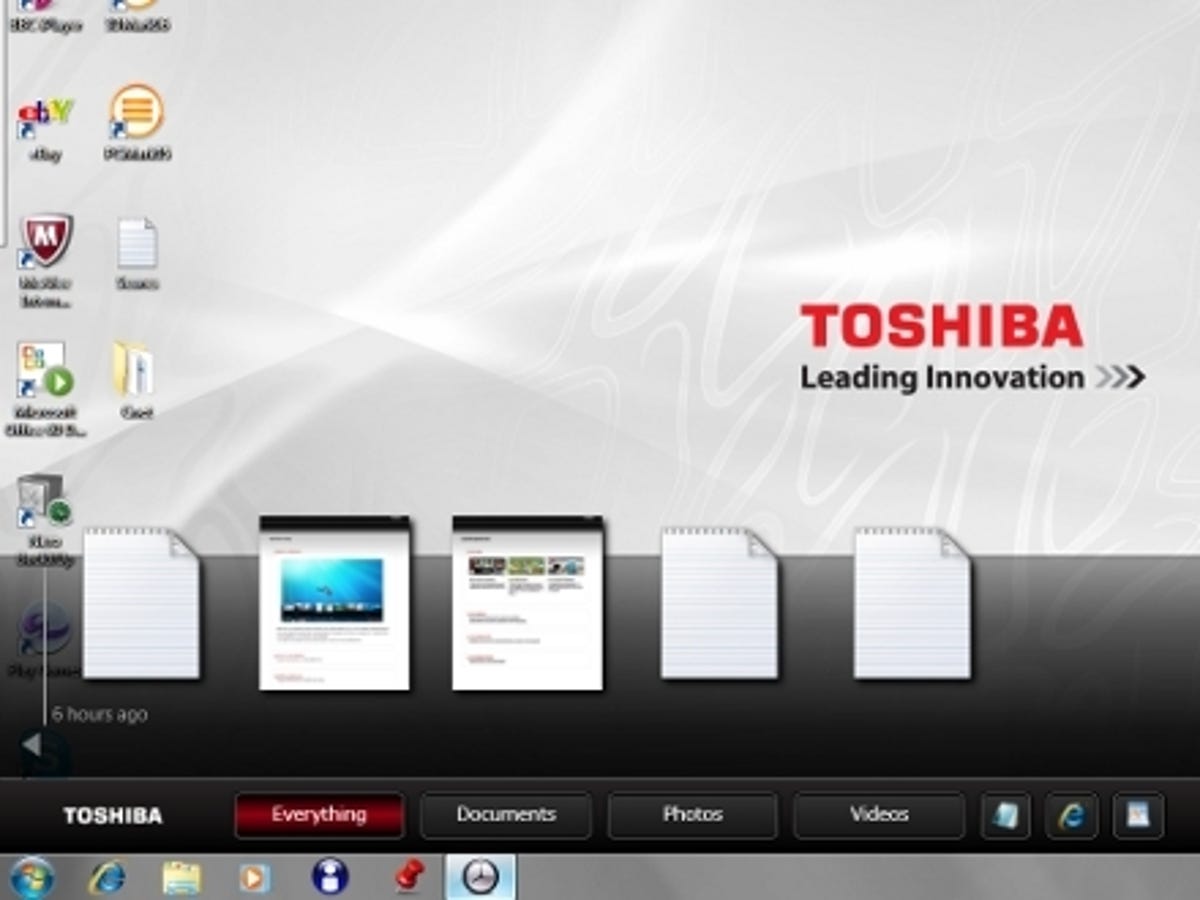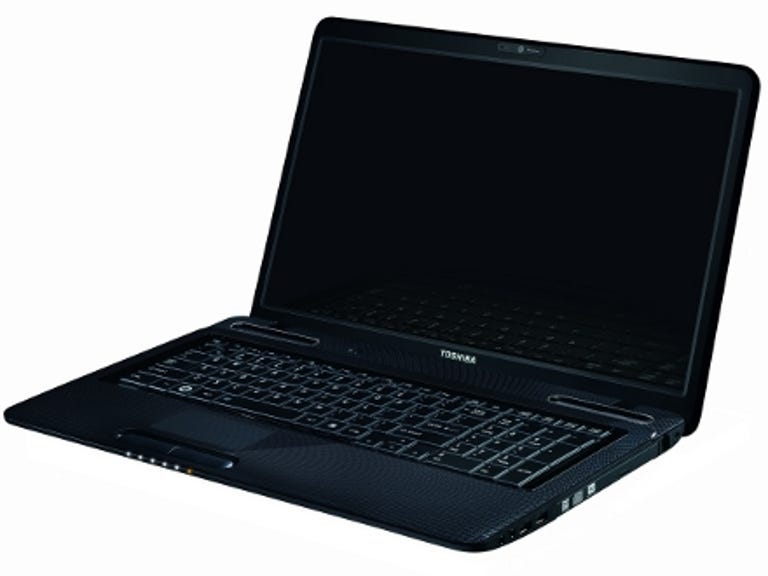 Why You Can Trust CNET
Why You Can Trust CNET Toshiba Satellite L670 review: Toshiba Satellite L670
Despite some flaws with the keyboard, there's much to like about Toshiba's Satellite L670 laptop. Our configuration, the L670-17K, looks stylish and offers impressive performance for the price.
Toshiba describes the Satellite L670 as 'ideal for everyday computing'. With its large, 17.3-inch screen and muscular Intel Core i5-450M processor, our configuration, the L670-17K, certainly seems to have the specifications to back up this claim. At around £750, its asking price isn't exactly outrageous, either.
The Good
The Bad
The Bottom Line
Stylish slab
In the past, some of Toshiba's Satellite laptops sported designs that were best described as 'functional'. That's certainly not the case with the L670, though. Although its glossy black finish doesn't exactly break the laptop mould, the subtle carbon-fibre-style pattern on the surface adds a touch of class. We're also fans of the elongated speaker grilles that sit just above the keyboard. The build quality is good too -- the chassis doesn't creak and flex when you pick it up, like some cheaper models do.
That said, we do have an issue with the keyboard. The one on our review sample flexed a great deal in the middle. As a result, we felt rather like we were typing on a bouncy castle. We could have had a defective unit, but it's worrying nonetheless. The keyboard is, at least, quite roomy, with full-size shift and return keys, and a numerical keypad on the right-hand side.
The trackpad is also superb. Toshiba has finished it with a slightly rough texture that feels much less sticky than some of the smooth trackpads you'll find on recent Samsung and Dell models. The large buttons are also very snappy, and their elongated shape neatly echoes that of the laptop's speaker grilles. Just above the trackpad, there's a button to turn it on and off, which is handy if you want to use the laptop with a mouse.

The L670 isn't particularly well endowed when it comes to ports. You get three USB ports (one of which doubles as an eSATA port), but similarly sized laptops from other manufacturers now tend to come with four USB sockets. Toshiba has, however, managed to kit the machine out with both a standard VGA socket and an HDMI port. The latter makes it much easier to connect the laptop to a flat-screen TV.
There's also an SD card slot that comes in handy for transferring pictures from a digital camera or mobile phone. But, while the laptop has an Ethernet port, as well as support for the latest 802.11n version of Wi-Fi, there's no Bluetooth connectivity.
Unfortunately, the L670's 17.3-inch screen doesn't stretch all the way to a 1080p resolution, stopping short at 1,600x900 pixels. Nevertheless, it's certainly crisp and large enough to allow you to work on two documents side by side. Like many of today's laptop screens, it has a glossy coating. This helps colours to really stand out, but also makes the display quite reflective, which can be distracting if you're working near a window with sunlight streaming through.
When it comes to storage, there's a 500GB hard drive, divided into two 250GB partitions. This should be plenty of room if you're the type that likes to store HD videos and the like on your laptop. The right-hand side of the machine is also home to a DVD rewriter, which is handy for backing up files and burning CDs.
You won't want to use the L670's speakers for listening to music, however. They're truly terrible, even by laptop standards. If you do buy this machine, we'd recommend you also obtain a decent set of PC speakers to go with it, or just use a good set of headphones.
It's got grunt
Toshiba has built the L670-17K around a 2.4GHz, dual-core Intel Core i5-450M processor. This chip also has a turbo function, so it can be automatically overclocked to 2.66GHz when handling a particularly demanding task. The laptop has a decent 4GB helping of RAM, which gives the 64-bit version of Windows 7 Home Premium some room to stretch its legs.
The laptop returned a healthy score of 7,364 in the PCMark05 benchmark test. That indicates it will easily handle demanding tasks such as editing high-definition videos.
Toshiba has supplied the L670-17K with an ATI Mobility Radeon HD 5650 GPU, which scored 7,427 in the 3DMark06 test. It's not the fastest graphics chip in the world, but it does have enough grunt to play some of the more recent games, as long as you turn the detail settings down slightly.
The L670-17K's battery life isn't too bad for a machine of its size. In the intensive Battery Eater Classic test, it lasted for 1 hour and 2 minutes, with the CPU running at 100 per cent. With normal use, you should get at least twice as long from the battery.
Conclusion
The Toshiba Satellite L670-17K is a good-looking laptop that offers impressive performance and a decent screen at a reasonable price. It's just a shame its spongy keyboard and below-par sound quality let it down slightly.
Edited by Charles Kloet


